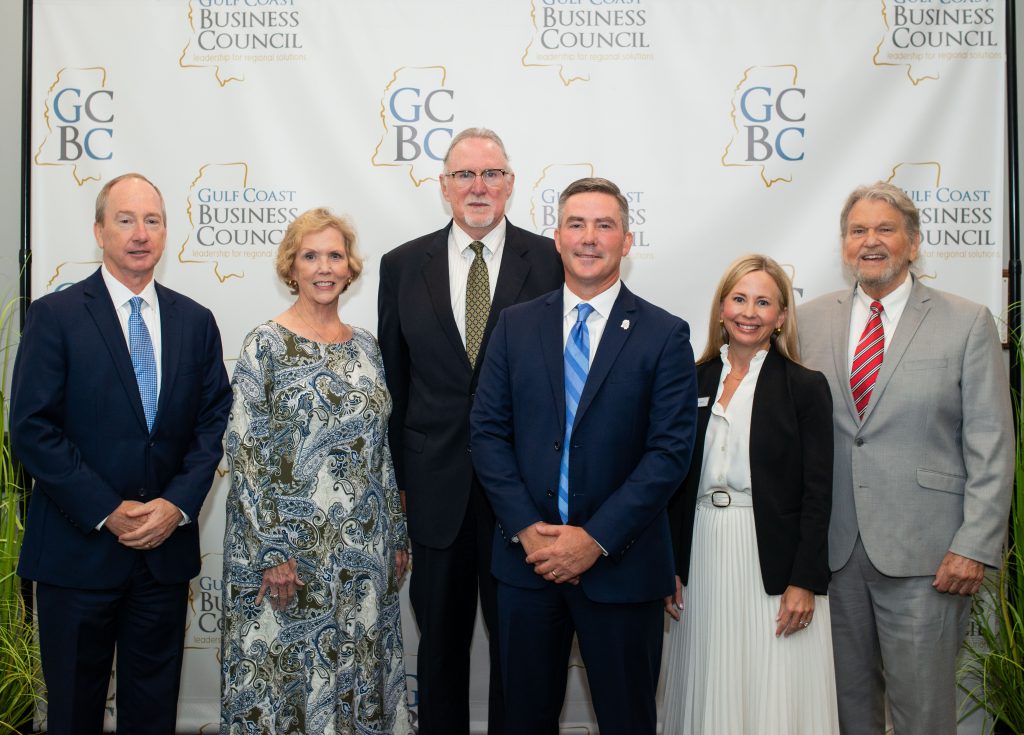The Gulf Coast Business Council’s July General Membership Meeting, held July 24 at the Knight Nonprofit Center, continued our summer series on the Gulf Coast Restoration Fund (GCRF) and investment priorities for Coastal Mississippi.
The meeting began with several updates from GCBC members that underscored momentum across our region:
Gulfport-Biloxi International Airport celebrated a ribbon cutting for its third t-hangar, adding eight new bays to its general aviation area—bringing the total to 24. These bays are already in high demand and expected to be filled by September 1. The project was partially funded through the Mississippi Multimodal Transportation Improvement Program.
The Salvation Army Mississippi Gulf Coast introduced a new slate of leadership serving the bottom six counties of Mississippi. Majors Paul and Karen Egan, Captains Bruce and Tavia Williams, and Major Janna Torgerson will lead efforts from Biloxi to Pascagoula, continuing the mission to meet human needs across the Coast.
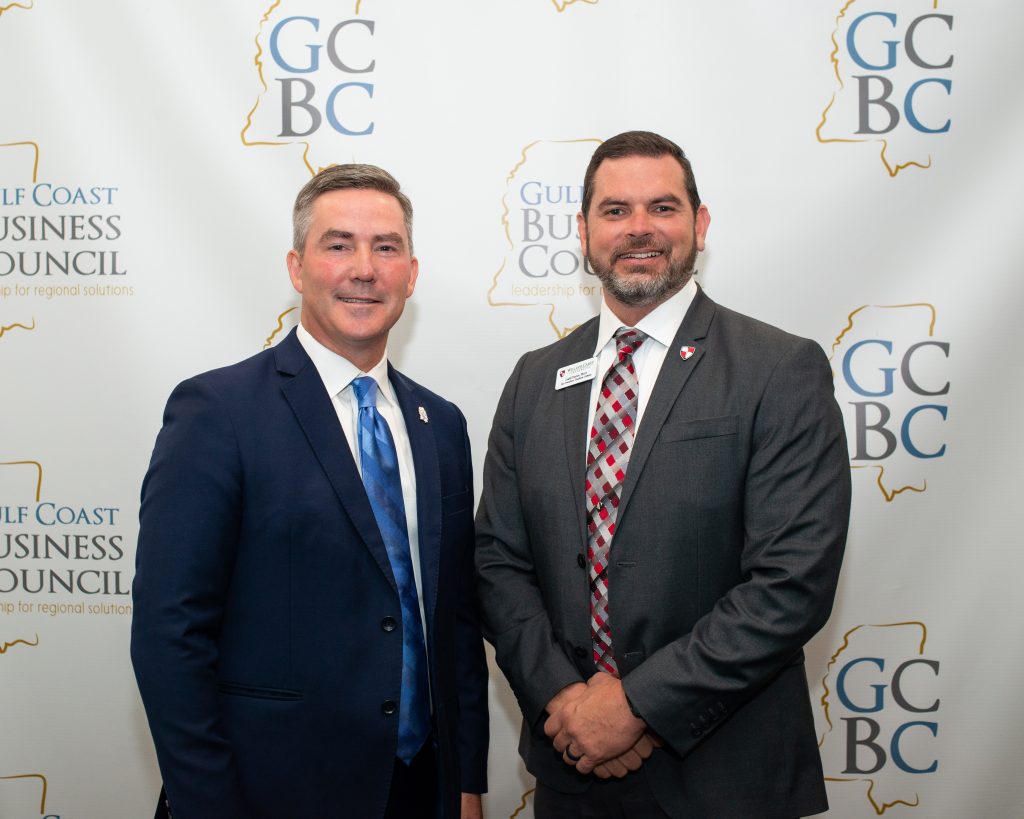
Jamie Miller, President & CEO of GCBC, and Dr. Ladd Taylor, Vice President of William Carey University’s Tradition Campus and the newest member of the GCBC Board of Directors.
Dr. Ladd Taylor was formally welcomed to the GCBC Board of Directors. As Vice President of William Carey University’s Tradition Campus and a longtime higher education leader, Dr. Taylor brings a deep commitment to workforce development and regional progress.
Red Clay & Sand Mixer: Members were also invited to attend the upcoming Red Clay & Sand Mixer on July 30 at the Neshoba County Fair—an opportunity to connect coastal leaders with statewide stakeholders over seafood, music, and Mississippi hospitality.
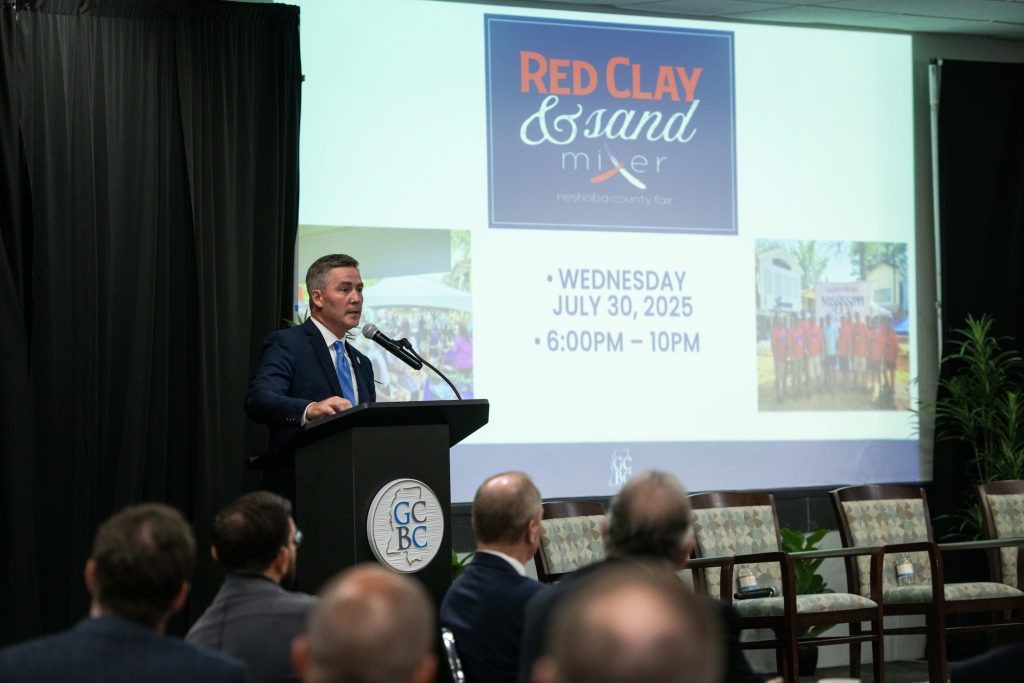
Jamie Miller speaking about the upcoming Red Clay & Sand Mixer on July 30 at the Neshoba County Fair.
How & Where GCRF Money Has Been Invested
GCBC President & CEO Jamie Miller walked attendees through the timeline, structure, and spending history of the Gulf Coast Restoration Fund. His message was clear: now is the time to realign strategy, scale our thinking, and make the most of what remains in this once-in-a-generation opportunity.
A few key facts:
- $750 million: Total amount Mississippi received in BP Economic Damages Settlement (over 17 years)
- $65 million: Estimated GCRF funds available in the 2026 legislative session
- $100M of the initial $150M BP installment was spent throughout the state
- 75% of GCRF funds are designated for use in the three coastal counties
To date, GCRF appropriations include:
- $10.6M to Pearl River County projects
- $3.8M to Stone County projects
- $6.7M to George County projects
- $11.5M to Hancock County projects
- $35M+ to Harrison County projects
- $30M+ to Jackson County projects
These investments have supported a wide range of initiatives, including:
- Port and rail infrastructure
- Career and technical education centers
- Downtown revitalization
- Museum expansions
- Medical facilities
- Technology parks
- Cybersecurity research
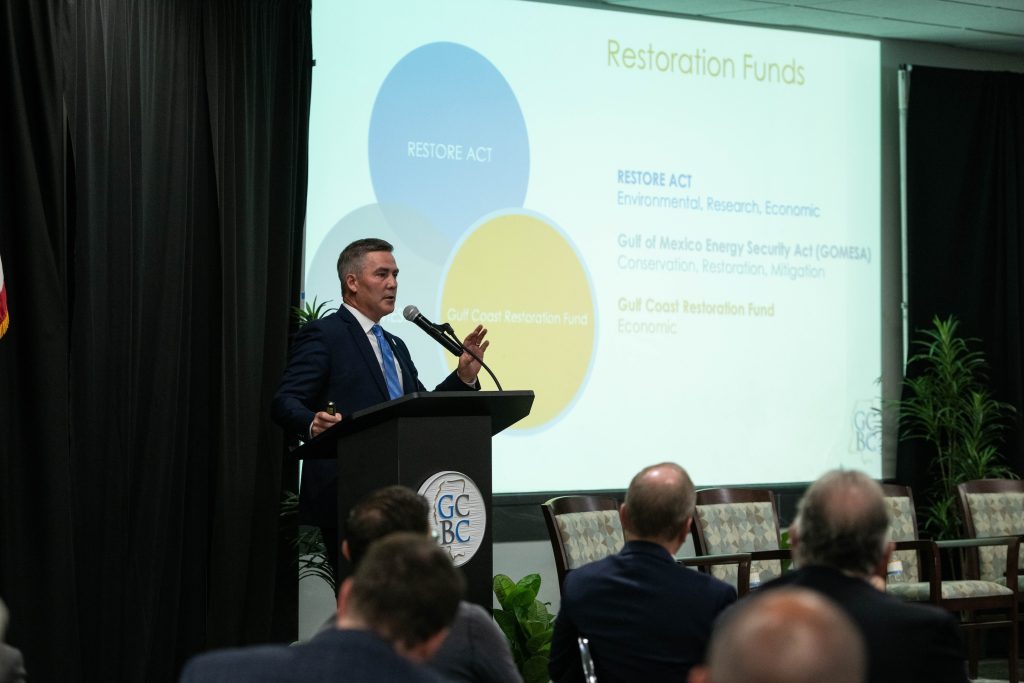
Miller explaining how and where GCRF money has been invested.
And yet, as Jamie Miller pointed out, no GCRF appropriations were made in either 2024 or 2025, signaling the need for stronger alignment, clearer strategy, and more transformational thinking.
“It’s time for a strategy,” Miller emphasized. “The legislation tells us to think big—but the process has forced us to think small.”
Following Miller’s call to action, he reminded attendees of recent remarks by Lt. Governor Delbert Hosemann during last month’s GCBC meeting: “You’ve got too many small projects. Bring us bigger projects—and finish the ones you’ve already started.”
The message from state leadership is clear: Coastal Mississippi must shift its focus from scattered, incremental spending to bold, cohesive investments that can move the entire region forward.
Panel Discussion with the GCRF Advisory Board
To explore how we can meet this moment, GCBC welcomed members of the Gulf Coast Restoration Fund Advisory Board for a candid panel discussion moderated by Miller.
Panelists included:
- Greg Cronin – Speaker of the House Appointee
- Mark Cumbest – Lt. Governor Appointee
- Susan Grice – Governor Appointee
- Becky Montgomery – Governor Appointee
- Jim Simpson – Speaker of the House Appointee
Each board member offered their perspective on what’s working, what’s not, and what must change to ensure GCRF is used wisely.

The GCRF Advisory Board on a panel facilitated by Miller.
Highlights from the discussion included:
- Mark Cumbest expressed disappointment in the lack of transformational proposals, saying, “I don’t think we’ve done anything transformational yet… At one point, I thought maybe I need to get off this board and submit a project myself.”
- Becky Montgomery emphasized that quality of life must remain central: “Without it, transformational projects may come—but they won’t stay.”
- Greg Cronin focused on economic impact and viability: “Ultimately, we’re looking for projects that provide growth, economic development, and move the Gulf Coast forward.”
- Susan Grice highlighted the importance of financial soundness and leveraging private sector involvement.
- Jim Simpson offered a reminder about timing: “Understand the lead time… If you can put up your 20% of the budget upfront, your project will move faster.”
- Greg Cronin emphasized that it isn’t necessary to spend the full allocation every year if transformational projects aren’t ready, urging a focus on quality and long-term impact over speed. He suggested that setting aside $3–$5 million annually could extend the life of the fund beyond 2033, allowing for greater flexibility when truly game-changing opportunities arise.
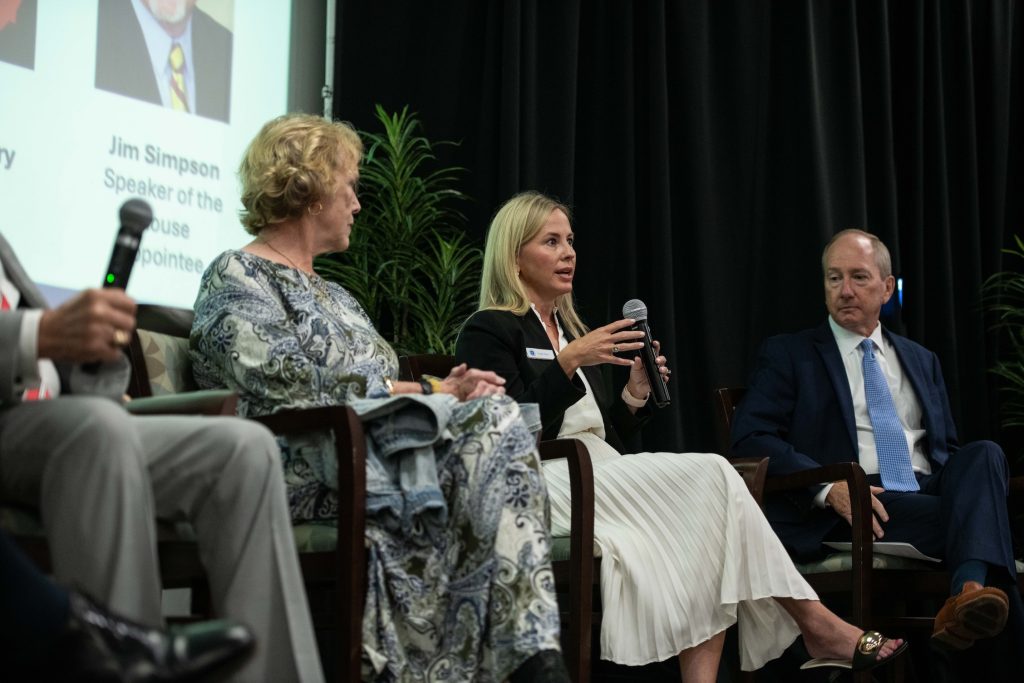
GCRF Advisory Board member Susan Grice answers audience questions.
The audience Q&A added another layer of insight, with questions about the percentage of recommended projects that ultimately receive funding, whether the board ranks the projects it recommends, and how to ensure proposals deliver value to the Coast as a whole.
One of the most powerful moments came from newly elected Long Beach Mayor Tim Pierce, who said: “We are not currently acting as one coast. Every town is fighting to get its own piece. We need to focus on what will lift everyone.” His words were met with a round of applause across the room.
The panel agreed, noting that collaborative, region-wide projects—especially those supported by multiple cities—are stronger contenders but remain too uncommon. “One big role we serve,” Cumbest explained, “is filtering out projects that don’t make sense. But we can’t do this alone. We need applicants to think about what will truly move the entire Coast forward.”
What’s Next
The summer series will conclude on August 28 at Ingalls Shipbuilding, where Speaker of the House Jason White will join us to continue the conversation. Seating is limited and registration is required.
We remain committed to meeting in all three lower coastal counties throughout the year and to building consensus around smart, forward-looking investments that maximize this once-in-a-generation opportunity.
Let’s think big—and build even bigger.

